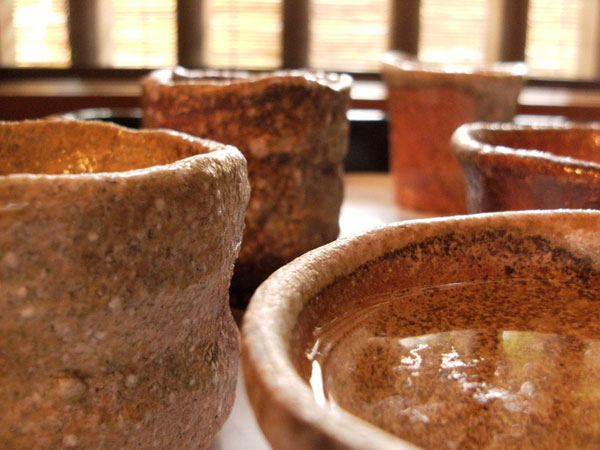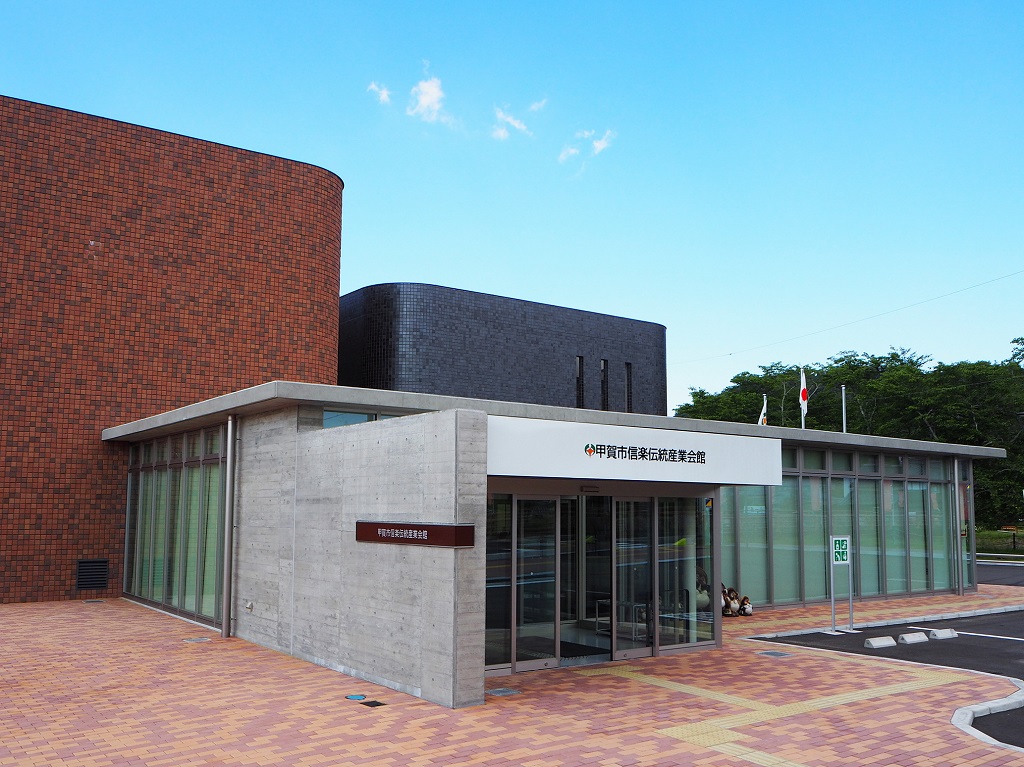
- Ceramic
- Shiga
Shigaraki ware Shigaraki yaki
One of Japan's Six Ancient Kilns
Specialist of the firing deformation
Description
What is Shigaraki ware ?
Shigaraki ware (called Shigaraki yaki in Japanese) is a type of pottery made around the town of Shigaraki in Shiga prefecture.
Clays such as kibushi, mizuchi, or gairome are kneaded to make a strong clay that can be used to make thick and large pottery vessels.
One notable feature of Shigaraki ware is that it is made using coarse soil so it is highly fire-resistant. In the firing process, it acquires pink or other shades of red, becoming red with scarlet or brown overtones.
Due to subtle changes that depend on the temperature and firing method, Shigaraki ware's white clay takes on a scarlet glow and warm coloring, a characteristic unique to this craft.
When the pottery gets buried in the ashes from complete combustion of wood in the kiln, the bottom portion takes on a softer, dark brown color. The fact that this pottery is glazed also helps give the surface a smooth look. The rusty glaze on the scorched portions of Shigaraki ware is prized in tea utensils.
Shigaraki ware is unique because of its simple warmth and rich expressiveness.
History
Shigaraki ware is one of Japan’s Six Ancient Kilns. Together with Bizen, Tamba, Echizen, Seto, and Tokoname, it is considered to be one of the most outstanding Japanese kilns with traditions that remain even today. It is said to have originated in the eighth century, when Emperor Shomu had tiles fired for the construction of the Shigaraki Palace.
Up until the middle of the Kamakura period (1185-1333), its main products were items like water jugs, but with the development of the tea ceremony during the Azuchi-Momoyama period (1573-1600), the production of tea utensils increased. Excellent tea utensils were crafted, and Shigaraki ware tea utensils that possess the aesthetic qualities of wabi (humble simplicity) and sabi (beauty in wear)* are still around today. During the Edo period (1603-1868), the business of manufacturing various utensils for daily use expanded with the making of sake bottles and earthenware pots.
During the years between the Taisho period (1912-1926) and shortly before WWII, Shigaraki hibachi pots (earthenware indoor heating pan) were the most popular type in households. In fact, Shigaraki ware accounted for 80% of all the hibachi pots sold within the country.
Because the unique earthy texture of Shigaraki ware is beloved, there is a wide variety of items available, from vases and tableware to ornaments and tiles. There are also Shigaraki ware Japanese raccoon dog (tanuki) statues which have become so popular that they are synonymous with Shigaraki ware. In 1976 Shigaraki ware was designated as a National Traditional Craft and Shigaraki is popularly referred to as “Shigaraki, the pottery town”.
*Wabi-sabi are two key aesthetic concepts of wabi or rustic beauty, both manmade and in nature, and sabi or change making things more valuable.
General Production Process
- 1. Creating the form The clay used in Shigaraki ware is taken from an ancient layer that accumulated at the bottom of Lake Biwa, just north of Kyoto. The soil, which started building up around four million years ago, is fire resistant and can produce the rustic texture and warm scarlet coloration of Shigaraki pottery. The dug out soil is mixed to become a malleable potter's clay. It is then crushed along with other materials and kneaded well with water to give it an even better texture. Depending on the type of pottery that is being made, the clay may need more time in the kneading machine. The artisan forms the clay into the shape of the product while considering the temperature and humidity of that day as well as the property of the clay. As the clay shrinks when baked, the clay must be formed into a larger size of the completed product. A potter's wheel is usually used for shaping, but bowls and plates with forms that are difficult to make with a potter's wheel are sometimes made using guide boards.
- 2. Applying a design A design is applied to the molded vessel by carving, marking, or other methods. Decorative patterns are applied too. Some common designs are matsukawa, a pine bark pattern, and inka, a pattern of small flowers.
- 3. Underglaze decoration In some cases, the artisan paints the decoration by hand. Underglaze decoration is applied using iron sand or impure cobalt oxide.
- 4. Glazing After the biscuit firing, which is low-heat initial firing, the ceramic material is glazed. Feldspar, limestone, silica and iron oxide are mixed together and an air gun, brush or ladle is used to glaze the piece. During the firing, the glaze melts and gives a different impression as it takes on a bright color, revealing the skill and originality of each potter. When the glaze is too thick, it doesn't melt even when fired or shrinks, failing to take on a beautiful coloration. In the same way, when it is too thin, the color is consumed by the raw clay and the underlying color is exposed just as it is. Therefore, this is a process requiring experience and skill.
- 5. Glost firing The products arranged in the kiln are fired at a high temperature of 1200℃ (about 2192℉) or more. The special texture of Shigaraki-ware dates back to ancient times, when pottery was fired in a wood-burning climbing kiln (ancient type of pottery kiln brought to Japan from China and Korea). A chemical reaction between the ashes and soil in the flames would occur, creating a natural glaze that made a glass-like surface. Nowadays, there are potters who use gas kilns or electric kilns, which provide stable heat. Because the quality of the finished pottery depends on the environment (the temperature, humidity etc.), the potter doesn't know how the pottery will turn out until the kiln is opened. Firing Shigaraki-ware requires paying much attention to traditions as well as modern sensibilities and techniques. After the pieces have been loaded and fired for more than 24 hours, they are unloaded. The temperature at the time of unloading is about 200℃ (about 392℉), so the workers must wear work gloves and take other precautions to avoid being burned. Each piece's top and base is then polished as a finishing touch. After carefully checking each piece, they are wrapped and boxed for shipping.
Where to Buy & More Information
Traditional Craft Center of Shigarayaki

-
Address
-
Tel.+81-748-82-2345
-
ClosedThursdays (open if Thursday is a holiday and closed on Friday)
-
Business Hours9am to 5pm
-
Website
See more Ceramic
- Imari ware/Arita ware
- Hasami ware
- Kutani ware
- Mashiko ware
- Shigaraki ware
- Bizen ware
- Hagi ware
- Koishiwara ware
- Mino ware
- Tobe ware
- Tokoname ware
- Karatsu ware
- Kasama ware
- Satsuma ware
- Iga ware
- Mikawachi ware
- Agano ware
- Otani ware
- Obori-soma ware
- Tsuboya ware
- Aizu-hongo ware
- Shodai ware
- Echizen ware
- Akazu ware
- Tamba-tachikui ware
- Yokkaichi-banko ware
- Izushi ware
- Kyo ware/Kiyomizu ware
- Iwami ware
- Amakusa ceramics
- Seto-sometsuke ware
- Sanshu Onigawara Crafts































































































































































































































































































